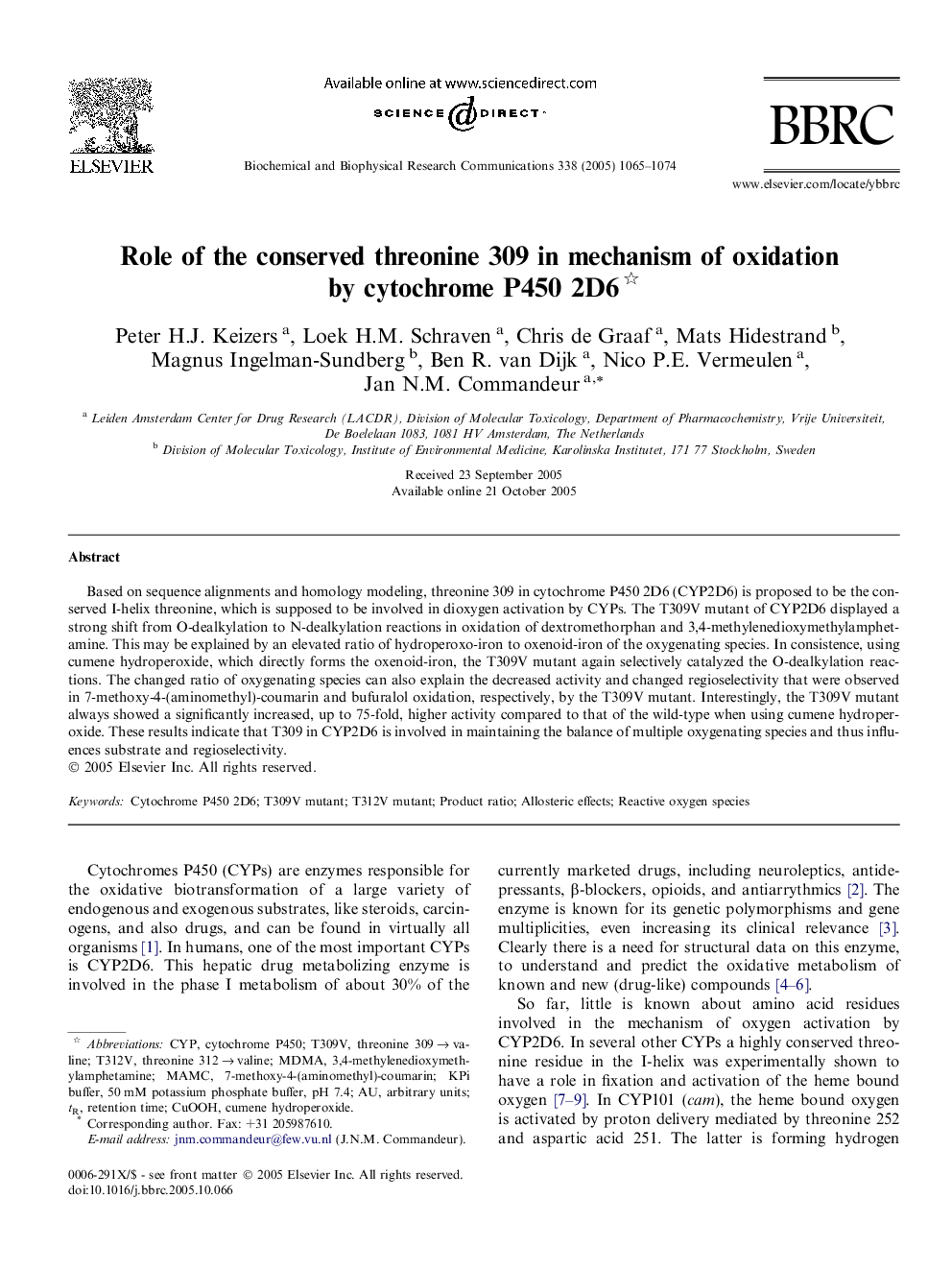| Article ID | Journal | Published Year | Pages | File Type |
|---|---|---|---|---|
| 10767914 | Biochemical and Biophysical Research Communications | 2005 | 10 Pages |
Abstract
Based on sequence alignments and homology modeling, threonine 309 in cytochrome P450 2D6 (CYP2D6) is proposed to be the conserved I-helix threonine, which is supposed to be involved in dioxygen activation by CYPs. The T309V mutant of CYP2D6 displayed a strong shift from O-dealkylation to N-dealkylation reactions in oxidation of dextromethorphan and 3,4-methylenedioxymethylamphetamine. This may be explained by an elevated ratio of hydroperoxo-iron to oxenoid-iron of the oxygenating species. In consistence, using cumene hydroperoxide, which directly forms the oxenoid-iron, the T309V mutant again selectively catalyzed the O-dealkylation reactions. The changed ratio of oxygenating species can also explain the decreased activity and changed regioselectivity that were observed in 7-methoxy-4-(aminomethyl)-coumarin and bufuralol oxidation, respectively, by the T309V mutant. Interestingly, the T309V mutant always showed a significantly increased, up to 75-fold, higher activity compared to that of the wild-type when using cumene hydroperoxide. These results indicate that T309 in CYP2D6 is involved in maintaining the balance of multiple oxygenating species and thus influences substrate and regioselectivity.
Related Topics
Life Sciences
Biochemistry, Genetics and Molecular Biology
Biochemistry
Authors
Peter H.J. Keizers, Loek H.M. Schraven, Chris de Graaf, Mats Hidestrand, Magnus Ingelman-Sundberg, Ben R. van Dijk, Nico P.E. Vermeulen, Jan N.M. Commandeur,
